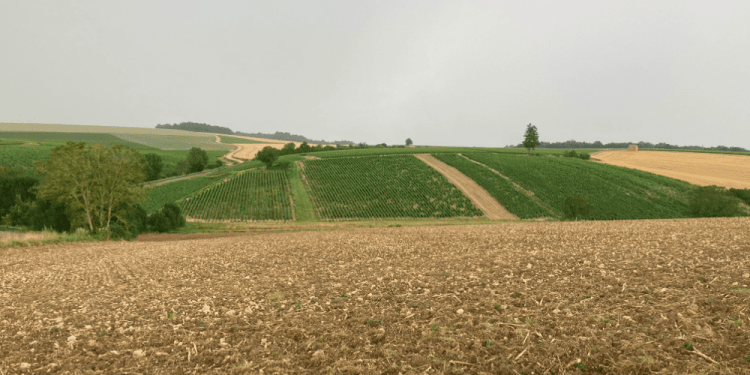Extreme Weather Conditions Push French Grain Harvest to the Brink, Sparking Concerns Over Quality and Economic Impact
This summer, relentless rainfall has wreaked havoc across many parts of Europe, with France, the European Union’s largest grain exporter, facing one of its most challenging harvests in recent history. The situation has escalated to the point where experts are using terms like “catastrophic” to describe this year’s harvest outlook, with crop conditions hitting an eight-year low and predictions of the worst production in a decade.
According to the latest update from FranceAgriMer, the agency responsible for monitoring agricultural conditions, the country’s soft wheat crop is in dire straits, with only 50 percent rated as good-to-excellent. This is a significant decline from 78 percent at the same time last year and marks the lowest rating since the disastrous harvest of 2016. The durum wheat crop is faring slightly better, at 58 percent good-to-excellent, but it too is down from 67 percent last year. Barley crops are also suffering, with winter and spring varieties rated at just 53 percent and 66 percent good-to-excellent, respectively.
The dismal crop conditions are largely due to an exceptionally wet spring, the fourth wettest on record according to Meteo France, with rainfall 45 percent above the 10-year average. The excessive rain, combined with a lack of sunshine, has delayed crop development and disrupted crucial fieldwork, resulting in landslides, flooding, and widespread damage to farmlands. As the wet conditions continue into the summer, harvest delays have become the norm, compounding the difficulties faced by French farmers.
By the end of July, the soft wheat harvest was only 67 percent complete, far behind the five-year average of 84 percent. The durum wheat harvest, typically completed by this time, was only 8 percent finished, compared to 100 percent a year earlier. Barley harvests are similarly behind schedule, raising concerns about both the quantity and quality of this year’s grain output.
The General Association of Wheat Producers in France (AGPB) has sounded the alarm, predicting a potential 15 to 28 percent drop in wheat output compared to 2023. This would bring the harvest down to around 26 million tonnes, the lowest in over a decade. Other sources, such as the agricultural consulting firm Stratégie Grains and the website Moisson Live, offer slightly more optimistic estimates but still foresee a significant reduction in production.
Quality issues are now a major concern, with reports of low test weights and poor protein content becoming increasingly common. These problems not only threaten the quantity of milling-grade wheat but also complicate the fulfillment of futures contracts on the MATIF exchange, which require a minimum test weight of 76 kilograms per hectoliter (kg/hl). This year, test weights as low as 74-75 kg/hl have been reported, potentially leading to a significant proportion of the crop being downgraded to feed wheat.
Financially, the impact on French farmers could be devastating, with potential losses exceeding €1.6 billion. The farming community is calling on the government for financial aid, including compensation, tax relief, and deferred loan repayments. French Agriculture Minister Marc Fesneau has acknowledged the severity of the situation, announcing that exceptional measures could be mobilized at both the national and European levels to support farmers. However, concrete actions, such as triggering the EU agricultural reserve, have yet to be taken.
The global grain trade is closely monitoring the French harvest, with concerns growing over the availability of milling wheat. As French wheat exports already lag behind previous seasons, the potential shortfall could lead to higher prices and increased demand for alternatives, such as Russian wheat. With quality downgrades forcing some farmers to sell their grain as feed, the situation remains fluid, and the economic repercussions could extend well beyond France’s borders.
Error




